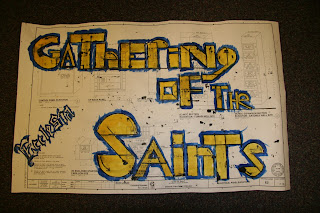On page 39, he says,
Any growth that we experience in character will be an asset in everything we do.
Do you believe that? Do you believe, for instance, that growth in honesty will not only help you relationally, but creatively? Do you think that growth in discipline will help you not only vocationally, but artistically? Can an increase in kindness make you a better
designer? Can growth in tact make you a better videographer? Can more courage make you a beter writer?
I actually believe the answer to all these questions is "yes". The reason it is called integrity is that it has to do with everything in your life being integrated. What lack of integrity (or integration) in your character is holding you back?
One more question. The first "Personal Action Step" on page 49 asks you to choose a personal ministry verse. Do you have one?
I don't know that I have one specific verse. But I am reminded often of Philippians 2:3-4.
Do nothing out of selfish ambition or vain conceit, but in humility consider others better than yourselves. Each of you should look not only to your own interests, but also to the interests of others.
I look forward to the day that I can truly exemplify these words.












